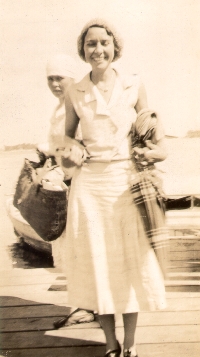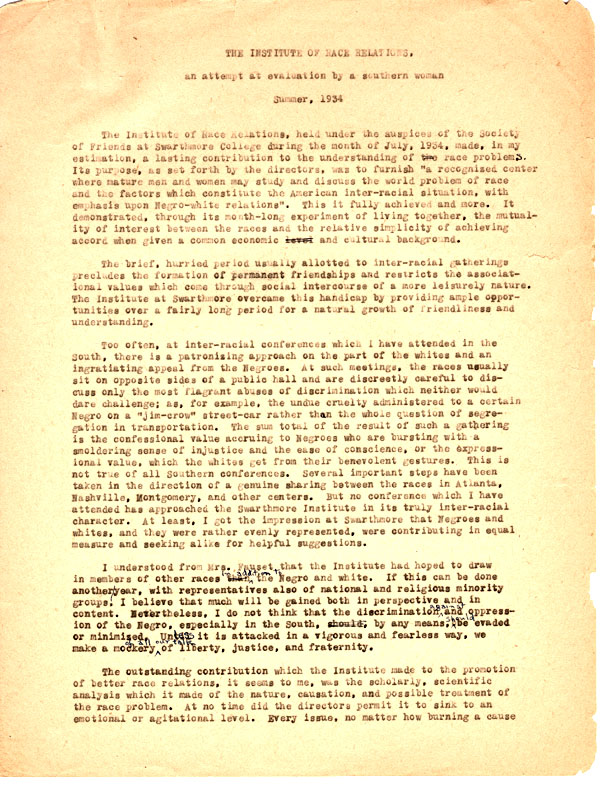 [Each month we feature a “creator” or one of the SHC’s manuscript collections. In archival terms, a creator is defined as an individual, group, or organization that is responsible for a collection’s production, accumulation, or formation.]
[Each month we feature a “creator” or one of the SHC’s manuscript collections. In archival terms, a creator is defined as an individual, group, or organization that is responsible for a collection’s production, accumulation, or formation.]
Guion Griffis Johnson of Chapel Hill, N.C., was a professor, author, scholar, journalist, women’s advocate, and general civic leader. Johnson held a Ph.D. in sociology from the University of North Carolina. She published three books: A Social History of the Sea Islands (1930), Antebellum North Carolina (1937), and Volunteers in Community Service (1967). Her husband was Guy Johnson, professor of sociology at the University of North Carolina at Chapel Hill. In the 1920s and 1930s, Johnson and her husband worked together at the Institute for Research in Social Science at University of North Carolina. Continue reading “Creator of the Month… Guion Griffis Johnson”


